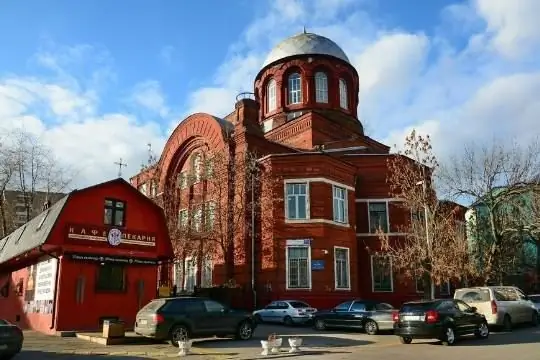
Description of the attraction
The Church of St. George the Victorious on Bolshaya Gruzinskaya Street was returned to believers back in 1993, but despite this, the building remains only half a temple. In one part of it, divine services are conducted in two languages, and the other is occupied by the Krasin Electromechanical College, located here in the 30s of the last century after the church was closed.
The construction of this temple is connected with the history of the establishment of the Georgian community in Moscow in the first half of the 18th century. In 1725, the Georgian king Vakhtang, who was in exile, settled with his subjects in the village of Voskresenskoye, which was granted to them by Peter I. Vakhtang's son George asked for permission to build a church, which was named after his heavenly patron - George the Victorious. The church was built literally on the ashes - the place where the burned down church of St. John the Evangelist was located earlier. The church was wooden; its consecration by the Archbishop of Georgia took place in 1750. But thirty years later, this building also burned down, and the inhabitants of the Georgian settlement began collecting funds for the construction of a new church. These works were carried out over several years: the foundation of the temple took place in 1788, and the completion of the work took place in 1800. The author of the project was Nikolai Vasiliev. Towards the end of the 19th century, the church was expanded due to the increase in the number of parishioners, and another building appeared nearby, built according to the project of Vasily Sretensky.
In the 20s of the last century, the church was deprived of the external attributes of a religious institution, its bells were removed, valuables donated by representatives of Georgian families were confiscated, and the library with books in Georgian and Old Slavic languages disappeared.
At present, the temple is recognized as an architectural monument of regional significance; an agreement has been concluded between the patriarchs of the Russian and Georgian Orthodox Churches to hold divine services in Russian and Georgian.






